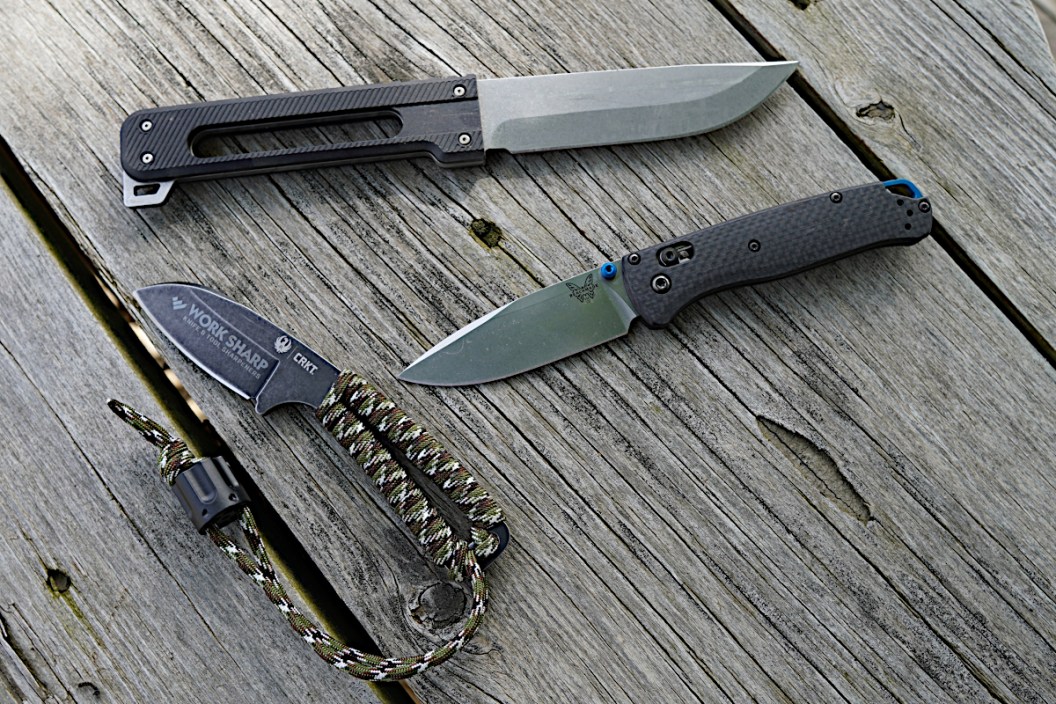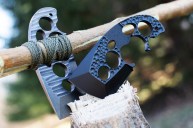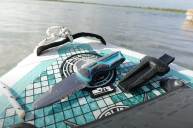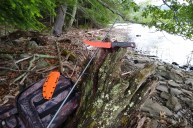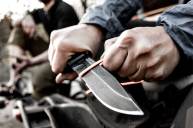Can hunting knives and camping knives be one and same?
We're a little bit spoiled in the modern era of outdoor equipment. There is a specialty item for anything and everything. There are rods and reels built for a very specific method of fishing. There are rifles and rounds meant for only one type of game.
This now applies to camping and hunting knives too. There are specialty skinning knives, buck knives, survival knives, fish fillet knives and knives intended strictly for self-defense. I have even seen some blades labeled as a "tactical knife."
But can hunting knives and camping knives be used interchangeably? Let's look at the issue a little deeper.
The need for one multi-purpose knife
When you start diving into the number of knives available these days, it can be a little overwhelming. It is true that specialty-designed knives often work better for different purposes. But does it ever feel like you own too many?
Think about what the old trappers and frontiersmen used to do hundreds of years ago. Those guys didn't have a Swiss Army pocket knife. Instead, they usually had one knife, almost always created by themselves on their home bench, that was used for every type of bushcraft you can think of.
A trapper in the mid-1800s likely had skinning knife that was also used as a fire starter, to trim firewood, shave, cut rope, prepare dinner and for self-defense. They were true multi-tools in every sense of the word.
At some point, knife makers got away from this. It is true that today's hunting knives are more efficient at gutting and skinning game, but they don't have a lot of use beyond their specialty.
I hardly ever touch my Gerber hunting knife unless it's deer season. But can you find a knife that you'll get a lot more use out of? We have some ideas of the attributes that a good combo hunt/camp knife might have.
If you can find something with most of, if not all, these characteristics, you're going to have a pretty great hunting and camping knife on your hands.
Steel quality
We won't dive too deeply into this. I know there are a lot of knife geeks out there who can go on for hours about high carbon steel vs nitrogen steel. Or the stain resistant qualities and corrosion resistance of AUS-8 vs 8Cr13MoV. But that's not really what this article is about. (Yes, I know many people HATE 8Cr13MoV.)
What I really want to get at is that steel quality should play a part in selecting a hunting/camping knife. If you'll be using it a lot in the field, you want a good quality steel. Ideally, something that holds its edge for a long time like S90V or S110V.
These steels are generally much harder to sharpen, but if you're using them in the field for an extended period, you want something that is going to retain that edge. Who wants to butcher up an elk carcass and then find a sharpener back at camp before you can start prepping the backstraps for cooking?
I know there are many people out there who really enjoy sharpening their knife blades. It's a form of relaxation to them. If that is you, more power to you. But I personally don't have a lot of time for it. So, for everyone else's purposes, we're going to recommend going with a higher quality steel for a combo hunt/camp knife that you don't have to sharpen often.
Full Tang or Nothing
If you're buying a high quality fixed-blade knife, we'd say a camping and hunting knife absolutely needs a full tang. If you don't know what that is, full tang basically refers to the knife's body extending under the handle. A full tang knife is basically one piece.
By comparison, a partial tang knife has only a small part of the knife extending backwards into the handle.
Why does this matter? Well, imagine you're cutting through the sternum of a big whitetail buck and you hit a tough spot where you need some leverage. A heavy-duty, full tang ensures you can put a lot of pressure on the handle without worrying about it breaking like a cheaper knife might.
I'm sure all of us have at one point had an experience with a cheap knife that just couldn't handle something like that. Quality knives like the popular Ka-Bar Becker B2, for example, have a full tang.
If you're using a knife for both camping and hunting, it's going to see a lot of use. Durability is a huge factor, and that's why you shouldn't consider anything less than a full tang for a knife used for both.
Blade features
There are a lot of intangibles that often make many knives ill-suited for both hunting or camping. For one, most survival knives out there are good "catch-all" types of knives that have useful features for a variety of situations. But most of these knives lack a gut hook like I have on my Gerber.
If you've never utilized a gut hook for opening wild game before, a good one makes field dressing as simple as opening the zipper on the front of your jacket. It really makes me wonder why more survival knife manufacturers don't add this feature to their survival knives. It's a lot of added value that takes up little room on the blade.
But on the other hand, I don't really like a full size, fixed blade knife for hunting. I prefer something the size of a pocket clip, EDC-style folding pocket knife style. Something like what Spyderco or Kershaw makes because I can just throw in my hunting bag and forget about until I need it. I also have a Benchmade Bugout folding blade everyday carry knife with an extremely sharp blade. While I have not tested it as a bushcraft knife or as a field dressing knife, I have complete confidence it could handle both. Just because it has a CPM-S90V stainless steel blade. It is razor sharp, making it a useful tool for any outdoorsman or worman.
A full size or drop point fixed blade knife, if worn on your belt, can get the handle or leather or nylon sheath hung up on stuff when going through thick brush. That can cause stealth issues if you're stalking.
The rubber handle that is standard on many drop point blade-type survival knives is much more ergonomic and easier to grip if your hands are wet or slick with an animal's blood while field dressing. It does not matter if you are looking at a Morakniv, a Schrade, or an SOG. Pay attention to the materials. Sometimes a wood handle might be better. At other times, a glass expoxy G10 handle might be preferable. In other instances you might want a hard plastic based Micarta.
Most hunting knives also don't have a serrated edge to them. That kind of edge really comes in handy for splitting pelvic bones or cutting through the hide of a tough, older animal.
The bigger blades of survival knives make them ideal camping knives. However, sometimes you don't really want that extra blade length when you're trimming around muscles and organs in the chest cavity of a smaller game animal. There is a reason many hunting knives have shorter blades unless they're meant for larger game like elk or moose. It really is difficult to find an in-between with some of these intangibles.
You might need to make trade-offs
We think it's possible to find a knife that work for both hunting and camping. The challenge is finding a heavy duty knife that has an a decent amount of blade intangibles coupled with an overall length or folding style that works for most camp activities. It would be great if we could find a hunting knife that also did everything a camp hatchet and machete, the compactness of a folding knife with the strength of a full tang fixed blade. But as far as we know, that perfect, magical blade doesn't exist.
In the end you really need to evaluate your camping and hunting style before you buy a knife to decide what features you can and can't live without. Hopefully, we've given you some ideas on what to look out for. Happy knife shopping!
For more outdoor content from Travis Smola, be sure to follow him on Twitter and check out his Geocaching and Outdoors with Travis YouTube channels.
NEXT: 3 THINGS TO REMEMBER WHEN ASKING PERMISSION TO HUNT
WATCH
